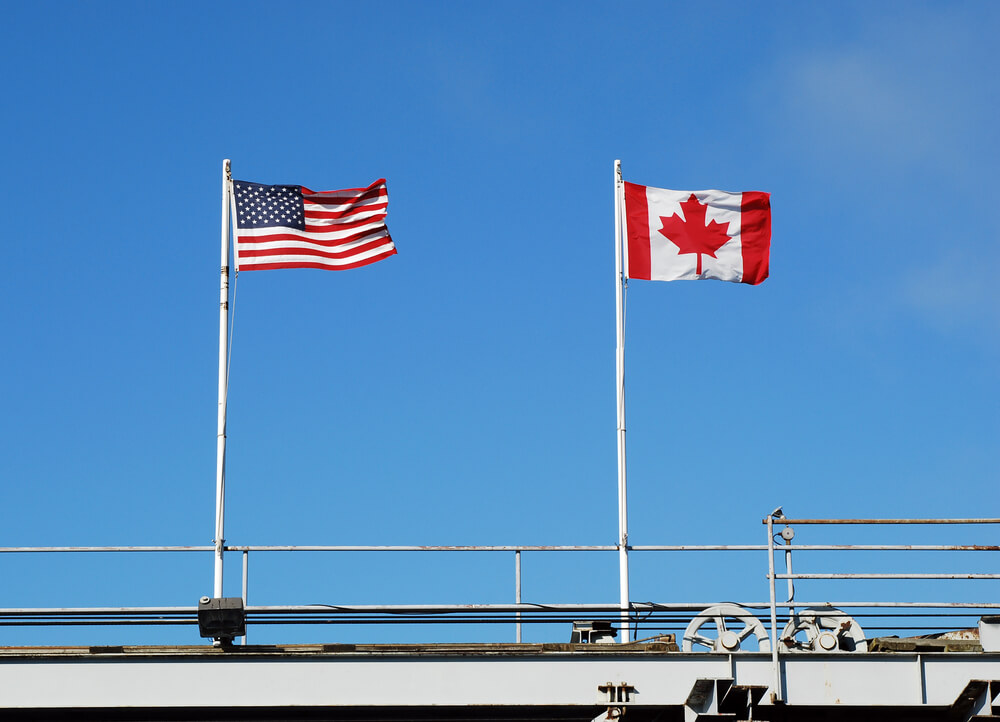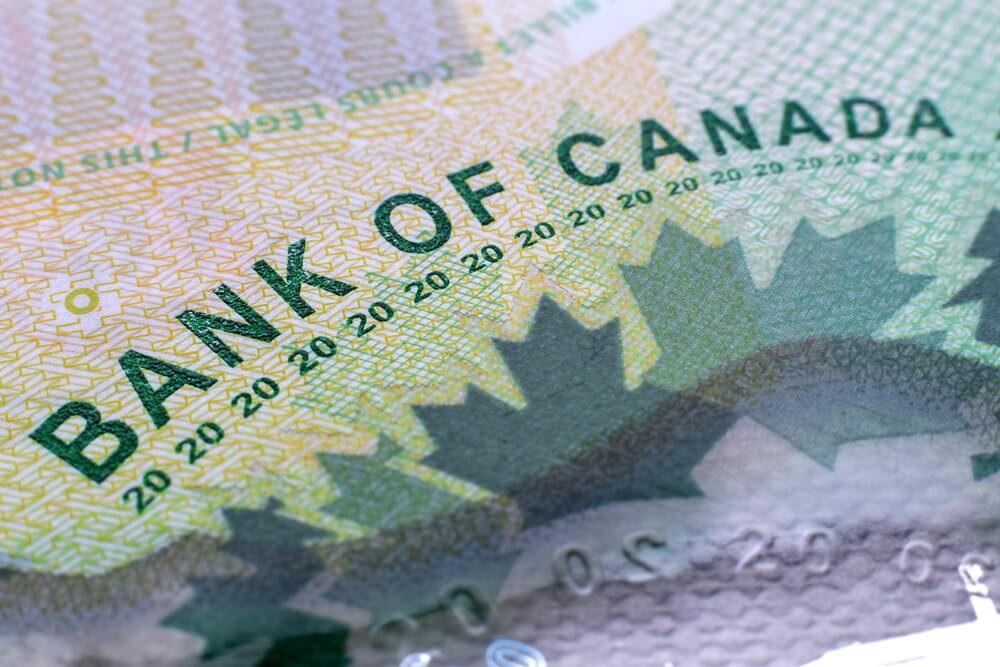The Best Home Insurance in Scarborough
Compare and save an average of $500* on Ontario home insurance.
Get a better rate.
Compare home insurance quotes from providers you trust
Jump straight to...
- Home insurance in Ontario
- Types of home insurance in Ontario
- Add-ons to home insurance coverage in Ontario
- What is not included in a typical home insurance policy?
- Recent Ontario home insurance quotes
- How RATESDOTCA gets you the best Ontario home insurance quotes
- Factors that determine your home insurance premium
- What a basic home insurance policy may not cover in Ontario
- Ontario home insurance premium trends by quarter
- Ontario home insurance price trends 2011 - 2022
- Average home insurance quotes in Ontario
- Frequently asked questions about Ontario home insurance
Home insurance in Ontario
If you own a home in Ontario, you’re not required by law to have insurance. However, most lenders won’t provide a mortgage unless coverage is in place. As a result, most homeowners have it.
Protecting what is likely your largest asset has both financial and emotional benefits. In the event of a covered peril, you’ll be compensated. With that comes some peace of mind. An additional benefit that some overlook is that most home insurance policies also include liability protection. This means that if someone is injured on your property, you will be protected financially.
If neither benefit persuades you, consider the practical reality of home ownership. Homes in Canada are increasingly impacted by damage from severe weather events linked to climate change. The Insurance Bureau of Canada (IBC) reports that in 2023, insured damage for severe weather in the country hit $3.1 billion. In addition to the record-breaking wave of wildfires that year, Ontario also had to contend with severe summer storms, which cost the province $340 million in insured damage. Furthermore, a spring ice storm that hit both Ontario and Quebec earlier that year cost the two provinces $330 million in insured damage.
When looking at the catastrophic losses from 1983 to 2022, as recorded in the 2023 IBC Fact Book, a clear pattern can be spotted – that insurance losses have risen dramatically over the last three decades, both in Ontario and Canada at large.
For instance, from 1983 to 2000, average catastrophic losses in Canada amounted to $440 million per year (loss and adjusted expenses in 2022 dollars). Between 2011 and 2020, those losses rose to the average of $2.3 billion. In 2020 alone, Ontario had to deal with flooding, windstorms and winter storms on two occasions. First, in January, which cost Greater Toronto, Kitchener, Innisfil, New Hamburg and Montérégie, Quebec, $110 million in damages. And later, in November, which cost southern and central Ontario, including Greater Toronto and Hamilton Area, Niagara region, Lake Erie shoreline, Muskoka region and Lake Ontario shoreline, $108 million in damages. In 2022, Ottawa, Greater Toronto, Kitchener-Waterloo as well as Outaouais, Lanaudiere and Laurentides in Quebec lost $1.3 billion in damages due windstorms and other catastrophic events.
This means that the protection afforded to you by home insurance won’t come cheap. In Q4 2023, for instance, all provinces experienced an increase in premium rate change year over year, with British Columbia seeing the highest rate increase of all – at 11.1%. Alberta, Ontario, Quebec and the Atlantic Provinces fared a little better, with rate changes of 0.7%, 8.3%, 2.5% and 9.1%, respectively. Even so, Ontario sits on the higher end of this spectrum.
So, what can you do as a homeowner? Your best bet is to be more discerning. When shopping for insurance, avoid buying the coverage you don't need. Here, we outline some of the important details you should consider when choosing coverage that’s right for you and your home.
Types of home insurance in Ontario
These are the most common types of home insurance coverage in Ontario.
Home insurance coverage
- Property and building: This coverage protects both the structure(s) on your property, as well as the property itself, from a variety of perils. Protected incidents include fire, theft and water damage, among others. Because some policies may require additional coverage for secondary structures, like a garage or guest house, consult your insurer if anything is unclear.
- Contents and personal property: Contents and personal property coverage protects your possessions, such as furniture, clothing and sports equipment, against theft and vandalism. Some items, like fine art and expensive jewelry, may not be protected under a standard policy. Excluded items can be protected with additional coverage.
- Additional living expenses: If you’re temporarily displaced by an insurable event, this protection covers your temporary housing costs. For example, if damage to your home forces you to spend a week at a hotel, additional living expenses protection will cover the cost of the room and food, up to a certain amount.
Liability coverage
- Personal liability: This coverage provides protection against liability in the event someone is accidentally injured on your property.
- Voluntary medical payments: If you unintentionally injure someone, or someone accidentally injures themselves on your property, this coverage will pay for the medical expenses for up to one year from the date of the accident.
- Voluntary property damage: This coverage is for unintentional direct loss or damage you cause to someone’s property. It also covers unintentional loss or damage to someone else’s property by a minor (12 years or under) in your care.
Add-ons to home insurance coverage in Ontario
Beyond the standard components of an Ontario home insurance policy, there are additional coverages you can purchase to further protect your home and the contents within.
These are some of the most common home insurance add-ons, also known as riders, that you can add to your home insurance policy:
- Overland water: Although not every carrier offers this add-on, if your insurer does, it covers property damage from overflowing water from nearby rivers, streams, lakes and thawing snow.
- Sewer back-up: Protects your home when a main sewer backs up and causes damage.
- Earthquake: Covers losses or damage caused by an earthquake. This add-on is especially useful if your home is located in an area that is vulnerable to earthquakes.
- Mass evacuation: If an event, like a flood or wild fire, triggers a government issued evacuation order, this add-on pays for some of the expenses you incur while being away from your home.
- Identity theft: Covers the cost of replacing important documents, such as your passport.
- Lock replacement: If you need to replace the locks on your house, this add-on provides coverage.
- Personal valuables: This add-on lets you increase the coverage amount to account for high-value items such as fine art, collectibles and jewelry (in case your regular coverage is not enough).
- Home sharing: If you’re looking to rent out your property, this will provide you with the additional property and liability coverage you need to stay protected.
- Personal umbrella: If you’re worried that your standard liability coverage isn’t enough (e.g. if your lawsuit costs you more than expected), this add-on can make up the difference.
What is not included in a typical home insurance policy?
Even if you have the most coverage money can buy, having opted for every available endorsement, there are some perils against which no policy will protect you. In the insurance world, these are referred to as 'exclusions'.
Common exclusions include:
- Absence from the home: Damage that takes place while you’re away from the home for an extended period of time.
- Alterations: A homeowner will only be protected against damage to a property that occurs during an alteration to it if they have received written permission from the insurance provider to undertake the alteration. However, common repairs such as painting or fixing a broken railing are not subject to this exclusion.
- Bylaw enforcement: You are not likely to be covered for costs stemming from the application or enforcement of a bylaw.
- Damage from renters: Most insurance providers require specific coverage for landlords. A standard home insurance policy is unlikely to protect you if a renter damages the property.
- Earthquake: Most policies exclude protection against earthquakes, though you can add coverage in the form of an endorsement.
- Existing damage: You’re unlikely to be covered for damage that began before you held the policy.
- Flooding: Most policies exclude flood protection, though coverage can be purchased as an endorsement.
- Volatile substance: If you have more than one gallon of a volatile substance on your property and a fire or explosion takes place, you may be denied coverage. This is likely to include gasoline.
There are also some perils for which no coverage is available. They’re referred to as ‘uninsured perils.’ For example, if your home is built on a known flood plain, no insurance protection may be available.
Recent Ontario home insurance quotes

Recent home Insurance Quote from Chatham, ON
Detached 1,510 sq ft
July 11, 2025
Cheapest Quote
$ 160 / month
$ 1,922 / yearAverage Quote
$ 305 / month
$ 3,660 / yearSavings
$ 145 / month
$ 1,740 / year
47 %
Recent home Insurance Quote from Hanmer, ON
Detached 1,272 sq ft
July 11, 2025
Cheapest Quote
$ 82 / month
$ 989 / yearAverage Quote
$ 98 / month
$ 1,177 / yearSavings
$ 16 / month
$ 192 / year
16 %
Recent home Insurance Quote from North york, ON
Detached 3,230 sq ft
July 11, 2025
Cheapest Quote
$ 182 / month
$ 2,181 / yearAverage Quote
$ 290 / month
$ 3,479 / yearSavings
$ 108 / month
$ 1,296 / year
37 %
Home insurance quotes are compared from Apollo Insurance, CAA, Economical Insurance, Pembridge, Square One Insurance, and SGI

How RATESDOTCA gets you the best Ontario home insurance quotes
RATESDOTCA works with home insurance companies and brokers in Ontario to provide you with a broad selection of quotes. We quickly collect your information and use it to generate the best offers from each of our partners. Our service is fast, easy and free to use.
By comparing Ontario home insurance quotes from several insurance providers in a single place, you can instantly assess the market and find the best policy to protect your property.
Ontario home insurance companies use a variety of factors to calculate your level of risk. The higher the risk, the more they’ll charge for coverage.
This list outlines the variables that have the greatest impact on the cost of your home insurance policy:
Flood risk
Insurance rates in Ontario are higher for homes located in areas known to flood or identified as flood plains. If you live close to a waterway, you can also expect to pay more for coverage. Even if that river or lake has not overflowed recently, record claim amounts for homes damaged by severe weather have made insurance providers increasingly cautious.
To be fully protected against flood risk, you may need to add different types of flood protection to your home insurance policy. While some insurance providers combine flood coverage into a water protection policy, others distinguish between overland flood protection and sewer back-up protection. Make sure you clearly understand what flood coverage has been added to your policy.
Disrepair
While most home insurance policies will protect against unexpected damage, if it was predictable, your claim may be denied. For example, if someone is injured after falling through a damaged banister, your home insurance provider has grounds for denying coverage. Make sure you attend in a timely manner to any aspects of your home that need repair so you can be confident of being covered, should the need arise.
Replacement cost
The replacement cost of your home is a primary determiner of the cost of your home insurance. The more expensive your house is to fix or rebuild, the higher your premiums will be.
Property location
The location of your home is factored into your premiums. If you live in an area with a high rate of break-ins, you’ll likely pay more because of the higher risk of theft. If you live next to a lake, you’ll pay more because of the risk of flooding.
Basement
Because basements are especially prone to water damage of both internal or external sources, owning a house with a basement means you’ll likely pay more for home insurance.
Electric wiring
If your home is old, its electric wiring may be putting you and your loved ones at risk. Houses built in the 1950s and earlier usually use a 60-amp service, which is more likely to cause a fire than the wiring used in newer homes. This increased level of risk may cause your premiums to go up.
House age
Beyond wiring, older homes are more likely to be at risk of plumbing and heating faults, which can lead to water damage or fire
High-risk household appliances
Wood-burning stoves and oil-based heaters can reduce energy costs, but they also increase the risk of a fire.
Roof
If you need to replace your roof, it can cost you up to $10,000, depending on the size and type of roof you’re installing. The materials used to build your roof therefore affect your insurance rates.
Pets
If you have pets, you’ll need to disclose it to your insurance company. Some pets are considered a liability risk. Certain dog breeds, such as rottweilers, may even cause some insurance providers to decline your application for coverage.
Smoking
Home insurance providers may offer a discount to homeowners who don’t smoke because they deem the home less likely to be damaged by fire from an unattended cigarette.
Claims history
Insurance providers consider your claims history to be an indication of how likely you are to make a claim in the future. If you’ve never made a claim before, you may be rewarded with a lower home insurance premium. On the other hand, if you’ve made claims in the past, your rate may be higher.

What a basic home insurance policy may not cover in Ontario
Standard home insurance policies won't cover your mortgage payments or property taxes. They may also exclude coverage of certain contents, like fine art, or protection for secondary structures on your property. Before selecting an Ontario home insurance policy, its important to understand what is and what is not protected under your plan.
Home insurance premiums in Ontario have been steadily increasing in recent years for a variety of reasons.
To begin with, it’s easier for insurance providers to increase home insurance rates than to increase auto insurance rates. While the latter requires regulatory approval, the former can be changed at the discretion of the company. The low interest rates environment of the last several years has resulted in lower investment returns for some insurance providers. To increase their revenue, many may have increased home insurance premiums.
Here’s a look at year-over-year home insurance increases in Ontario:
| Year | Avg Ontario home insurance premium (CAD) | Year-over-year % increase |
|---|---|---|
| 2022 | $1,487 | 16 |
| 2021 | $1,282 | 10 |
| 2020 | $1,164 | 1.2 |
| 2019 | $1,150 | 20.2 |
| 2018 | $957 | 4.2 |
| 2017 | $918 | 0 |
| 2016 | $918 | 16 |
| 2015 | $791 | 8.4 |
| 2014 | $730 | (4.3) |
| 2013 | $763 | 2.3 |
| 2012 | $746 | (4.6) |
| 2011 | $782 |
An increase of about 16% between the 2021 average provincial premium and that of 2022 also has to do with increasing incidents of severe weather, supply chain issues and a labour shortage.
More and more homes in Ontario are being damaged by severe weather. This has resulted in a higher volume of record claims.
Supply chain challenges and a labour shortage have also driven up replacement costs significantly.
For example, if a home covered by a comprehensive policy is damaged by a covered peril, the insurance provider will have to pay more to rebuild the structure because the cost of materials has increased and the cost of labour to complete the build has also gone up. These two factors are also likely to result in the provider having to cover the policyholder’s expenses for longer since they’ll be put up in a hotel for the duration of the delayed rebuild.
Average home insurance quotes in Ontario
According to data from RATESDOTCA’s 2022 Home Insuramap, the average annual cost of insurance for homes in Ontario was $1,487.
| City | Premium | |
|---|---|---|
| LaSalle | $2,411 | |
| Windsor | $2,139.47 | |
| Hearst | $2,046 | |
| Foleyet | $2,046 | |
| South Porcupine | $2,046 | |
| Keewatin | $2,033 | |
| Fort Frances | $2,023 | |
| Val Caron | $2,005 | |
| Elliott Lake | $2,005 | |
| Kapuskasin | $2,005 |
| City | Premium | |
|---|---|---|
| Ajax | $1,068 | |
| Stratford | $1,071.50 | |
| Cambridge | $1,081.40 | |
| Whitby | $1,093.33 | |
| Holland Landing | $1,094 | |
| Guelph | $1,098.22 | |
| Waterloo | $1,102 | |
| Kitchener | $1,102.60 | |
| Concord | $1,104 | |
| Stoufville | $1,104 |
Premiums for homes located near water were significantly higher. For example, the average annual home insurance rate in LaSalle, Ontario, near Windsor, was $2,411 in Ontario. The Windsor region is very flat and prone to flooding. The LaSalle neighbourhood is on the shores of The Detroit River.
As more and more Ontarians are affected by climate change, insurance providers are increasing their rates to ensure sufficient funds are available to cover more and more record claims being made by homeowners across the country.
How to get your Ontario home insurance quotes on RATESDOTCA
Compare quotes and save!
Tell us about your home
Answer some basic questions about your home. It won't take long!
Compare your quotes
See quotes from top insurance companies side by side.
Choose the right coverage
Find the right protection for your home and everything in it.
Secure your rate
Connect with the provider and secure your rate.
What people say about our quotes

Based on 6,448 reviews

Amazing
Very helpful and easy to use
Safe travels

Easy quick selection of rates
Easy quick selection of rates
J K

Great help in finding the best rate!
Great help in finding the best rate! Thanks a lot!
Ruthielyn opina

I like how I can quickly I can select…
I like how I can quickly I can select travel insurance. The web site had an issue earlier but seemed to correct itself.
Dennis

prompt service
Respnded quickly, recommended company was excellent
Michael W.

Save time and money with rates.ca
I always use rates.ca for my travel insurance. They compare rates from several insurance companies and I can choose the package that suits my needs. I save time, frustration, and best of all, money. Thank you rates.ca, I will definitely be using your service again in the future.
customer
*Shoppers in Ontario who obtained a home insurance quote on RATESDOTCA from January to December 2022 saved an average amount of $500. The average savings amount represents the difference between the shoppers’ average lowest quoted premium and the average of the second and third lowest quoted premiums generated by RATESDOTCA. Excludes tenant and condo insurance.










